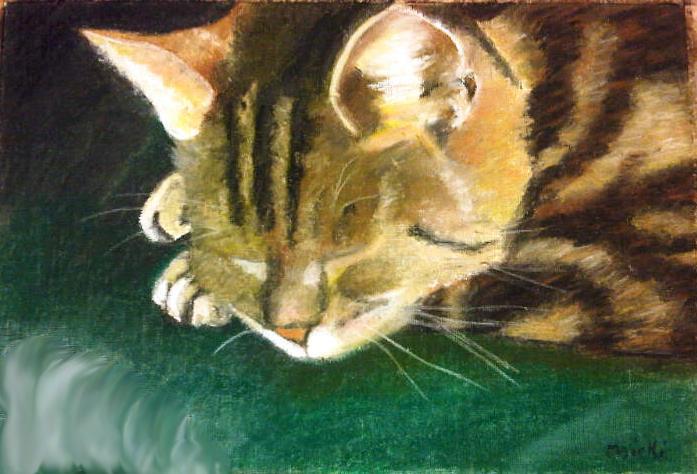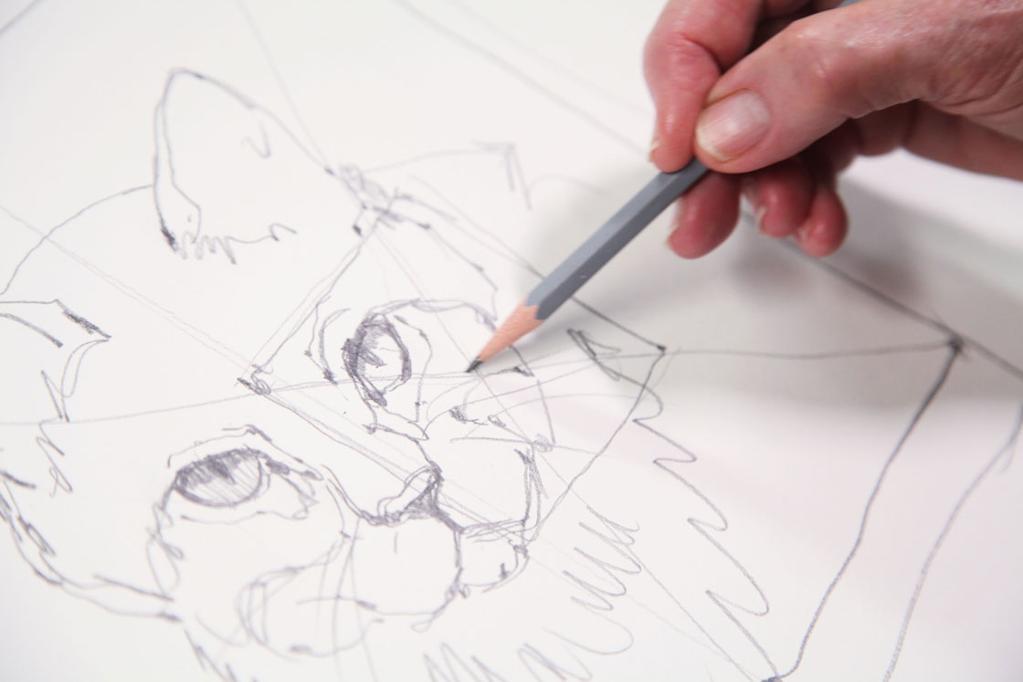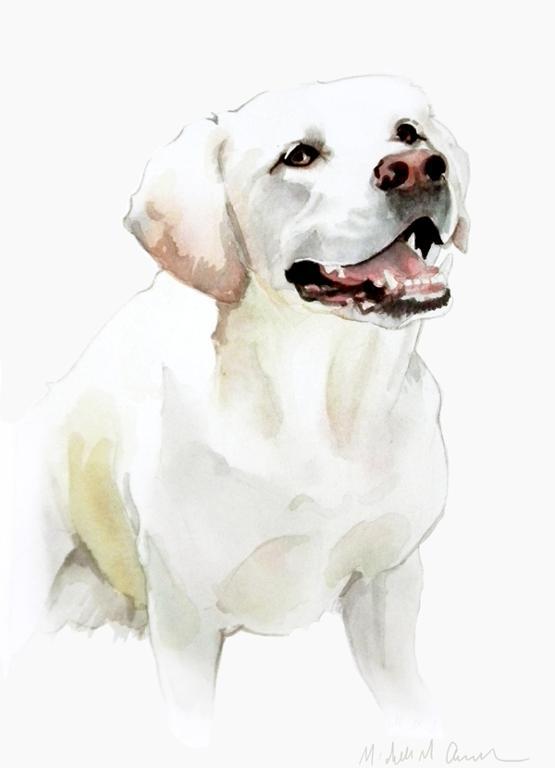Pets make our lives better. They bring love and liveliness to our everyday lives; they are esteemed members of our families. Pet portraits are a wonderful way to celebrate these beloved furry, feathered, fuzzy or scaled friends in painted form.
Painting a pet’s likeness might seem difficult, but these tips for painting pet portraits help simplify the process. From figuring out the ideal composition and setting a tone to breaking out the paint, we’ll guide you through the process so that you’ll be painting pet portraits in no time.
Before you paint:

Cat portrait via Craftsy member pastelart3252519
Get to know the pet
Author’s note: I will tell you a brief anecdote to illustrate the importance of capturing a pet’s essence. Once, I was commissioned to paint a portrait of a bulldog, and upon handing in sketches, was told in a disappointed voice that I had missed the “essence” of the dog. Well… I had one reference photo and I had never met the dog. What was I supposed to do?
This anecdote illustrates an important point: like painting portraits of humans, painting a pet is not merely about capturing a camera-realistic image. It’s about capturing the essence and personality of the creature.
The fact is, you can’t capture a pet’s true personality without plenty of information. If it’s your own pet you’re painting, you already have a good idea of the pet’s constitution. If you’re painting for someone else, you may not have a chance to actually meet the pet, but do spend some time with the pet’s owner talking about him or her. Learn about its personality, mannerisms and any important or notable attributes.
Get ample reference material

Photos via CakeSpy
If you will be creating your portrait from reference photos, be sure that you have plenty of photos from different angles and different types of light. Don’t settle for just one reference photo, as it is likely that it will lack information that may become important during the painting process, such as the way light hits the pet’s fur or the color of the pet’s eyes in sunlight. Either request, or take your own photos to showcase any markings or positions which may be relevant to your portrait.
Getting to know the pet in context may help your portrait. Knowing its favorite toys or places can help you decide on a scene, or at the very least, help you decide on a color scheme. Photos that include favorite toys, settings or accessories are helpful, too.
Make sketches

Cat sketch via Craftsy instructor Pat Weaver
Make plenty of sketches before you settle on a final composition for your portrait. Using newsprint or cheaper paper will help you warm up and offers the opportunity to experiment with different looks before you proceed. Through creating sketches, you’ll be able to determine the angle and composition for your final portrait.
Choose a composition that suits the pet
Pet portraits don’t need to be serious or completely photo-realistic. They can show humor and whimsy, like the portrait shown above which features a mischievous black dog riding a unicycle in front of Grant’s Tomb in Manhattan (yes, really). Choosing a setting and composition that suits both the pet and the owner will make the portrait precious and special beyond merely capturing a likeness.
Set up your work area in advance
Like any other portrait, you’ll want to have your work space set up for success so that you won’t have to pause during the painting process. Assemble your brushes, canvas or work surface and any supplies that you’ll need during the painting process. Having your work station set up in advance will ensure that you can focus on the painting.
Once you start painting:
Make an underpainting
If you’re working in acrylic or oil paint, creating an underpainting can be extremely helpful in creating a pet portrait. Just like painting a portrait of a human, an underpainting can add dimension to your pet portrait. A contrasting color might look odd on the canvas, but it will make your finished piece more lifelike later on. Bluprint course The Classic Self-Portrait goes into the process of underpainting in great detail.
Create the perfect palette

Pet portrait via Craftsy member Micky Arnold
Like painting skin tones, attaining the perfect fur, scale or feather color isn’t a matter of mixing one simple color. Whether it’s a dog, cat, turtle or python, you can see variations and undertones in the color of the pet’s visage and body. So even a dog that appears quite white might have yellow or grey undertones, whereas a black cat might have reddish undertones in the sunlight. Evaluate these undertones and create a palette that reflects these subtle tones.
Paint in layers
Like a portrait of a human being, you may find success in working on a pet portrait in layers. Creating a base layer to capture the basic colors and shapes of the face and body, and then refining to add texture and detail, will help you attain a dimensional, realistic final portrait.
Hone your pet portrait painting skills with Bluprint course Pet Portraits. Join renowned animal artist Pat Weaver and discover how easy it is to photograph, sketch and paint your pet. From gathering reference material to laying paint on paper or canvas, you’ll be well on the road to painting the perfect pet portrait.

Is there a particular feature that makes the portrait portray a puppy vs mature dog